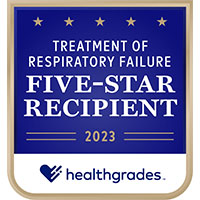Pulmonology
How to Avoid Carbon Monoxide Poisoning
Carbon monoxide poisoning is a significant issue, sending as many as 20,000 people a year to the emergency room. More than 400 Americans die each year from carbon monoxide poisoning, often from improper home heating.
While everyone is at risk, some are more sensitive than others, such as infants and the elderly. People with heart disease, breathing problems or anemia are also more susceptible to carbon monoxide sickness. Here are some ways you can stay safe and warm this winter.
Use Proper Ventilation
Gas ranges, ovens and kerosene heaters that are not been properly ventilated can leak carbon monoxide into your home. For example, appliances such as water heaters, should vent in an upward direction to the outside of the house. And if you smell an odor from a gas appliance, it may be leaking carbon monoxide.
Carbon monoxide poisoning happens because the gas is invisible and ordorless. As you breath the fumes, the gas begins to build up in your body and can cause sudden illness or death. The most common symptoms of carbon monoxide poisoning are:
- Headache
- Dizziness
- Weakness
- Nausea
- Vomiting
- Chest Pain
- Confusion
Make Safe Heating Decisions
Only buy gas equipment that has the seal of a national testing agency, such as Underwriters’ Laboratories (UL). The following are tips to keep in mind for heating and cooking:
- Don’t use a gas range or oven to heat your house.
- Charcoal or hibachi grills, lanterns and portable camping stoves are not appropriate for inside use.
- Never use a generator inside your home, basement, garage or carport.
- If you use a kerosene heater, refill it outside and make sure your home is properly ventilated.
- Make sure your fireplace flue and chimney are properly connected, in good working order and are not blocked. Blockage can cause carbon monoxide to build up in your home.
- Perform a seasonal check on all gas, oil or coal burning appliances to make sure that they are in good working order.
Quick Tip: Installing a carbon monoxide detector can warn you if dangerous levels of the gas are in your home. Change the batteries twice a year when you typically change smoke detector batteries.
Remember Car and Truck Safety
Never idle your car or truck in the garage with the door closed, and if the garage is attached to the house, don’t idle even with the garage door open. It’s a good idea to have the exhaust system checked each year to make sure that carbon monoxide doesn’t leak into your car.
What to Do if You Suspect Carbon Monoxide Poisoning
Carbon monoxide can be fatal without prompt treatment. If you suspect someone has carbon monoxide poisoning, call 9-1-1. You also should open the doors and windows to provide fresh air to the area. Turn off any heaters, gas ranges or other combustion appliances and leave the home.

 If you have pulmonary problems or suffer from a chronic lung disease, Saint Vincent Hospital can help you breathe easier. Designed to improve your quality of life, services include:
If you have pulmonary problems or suffer from a chronic lung disease, Saint Vincent Hospital can help you breathe easier. Designed to improve your quality of life, services include: